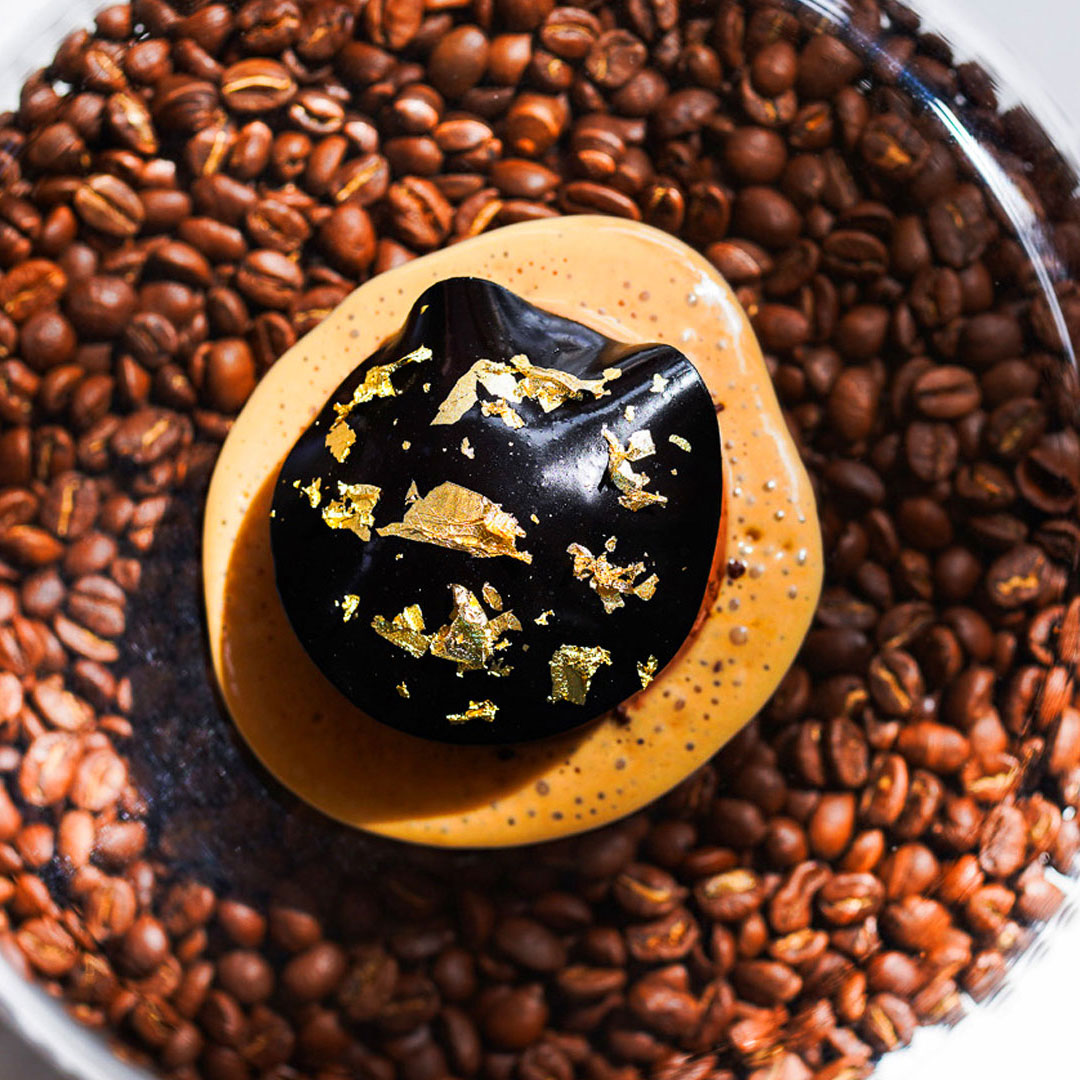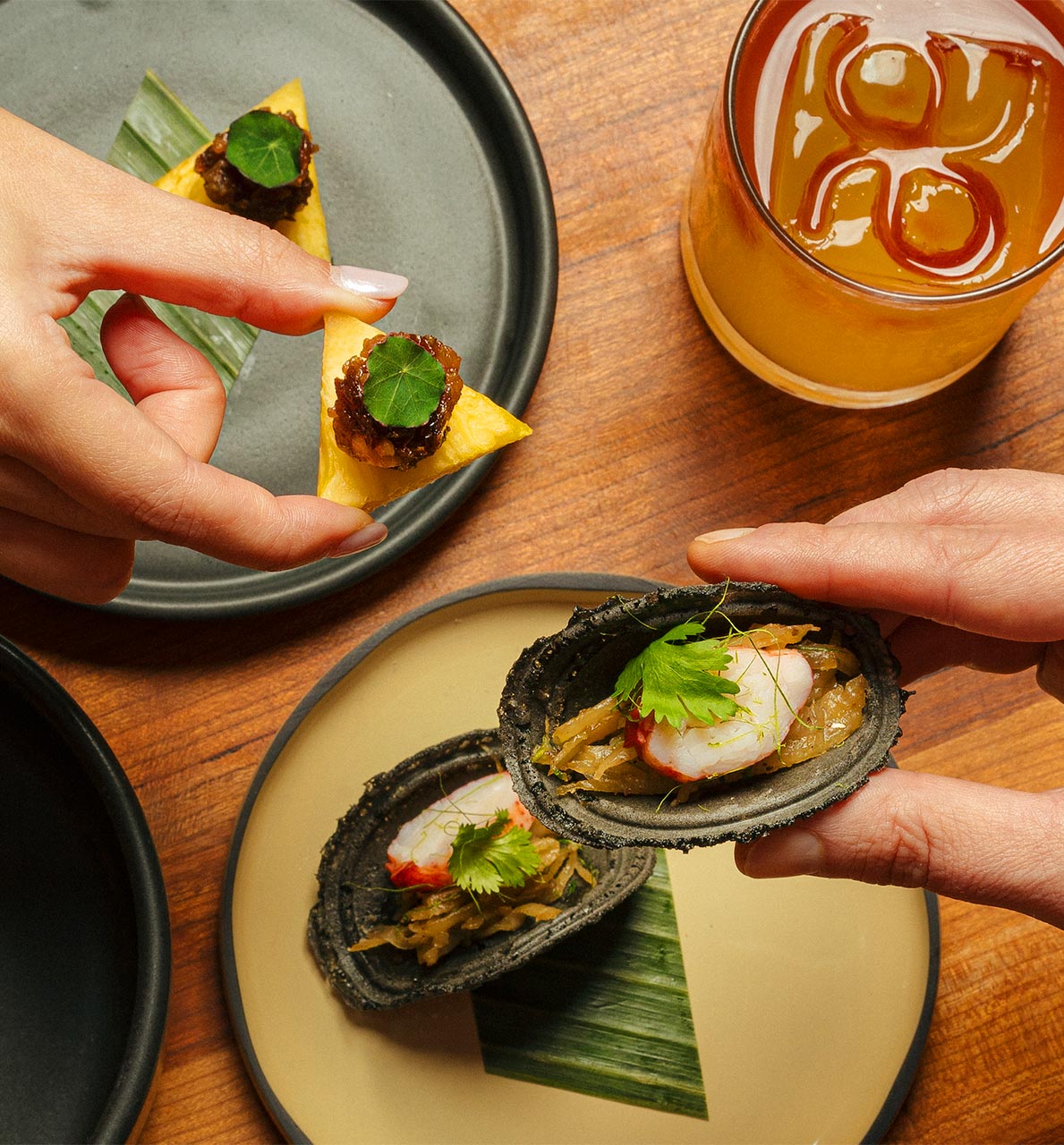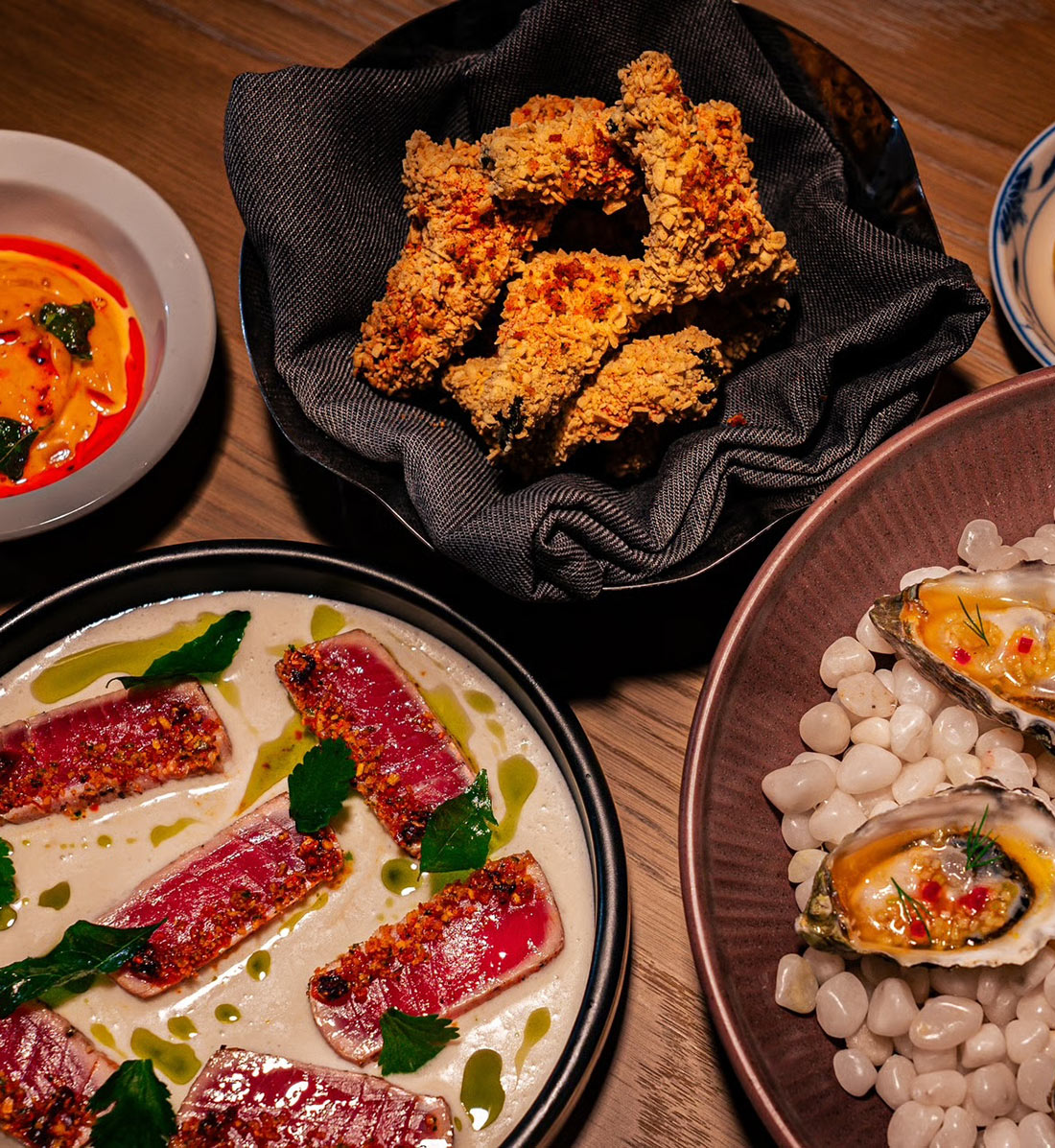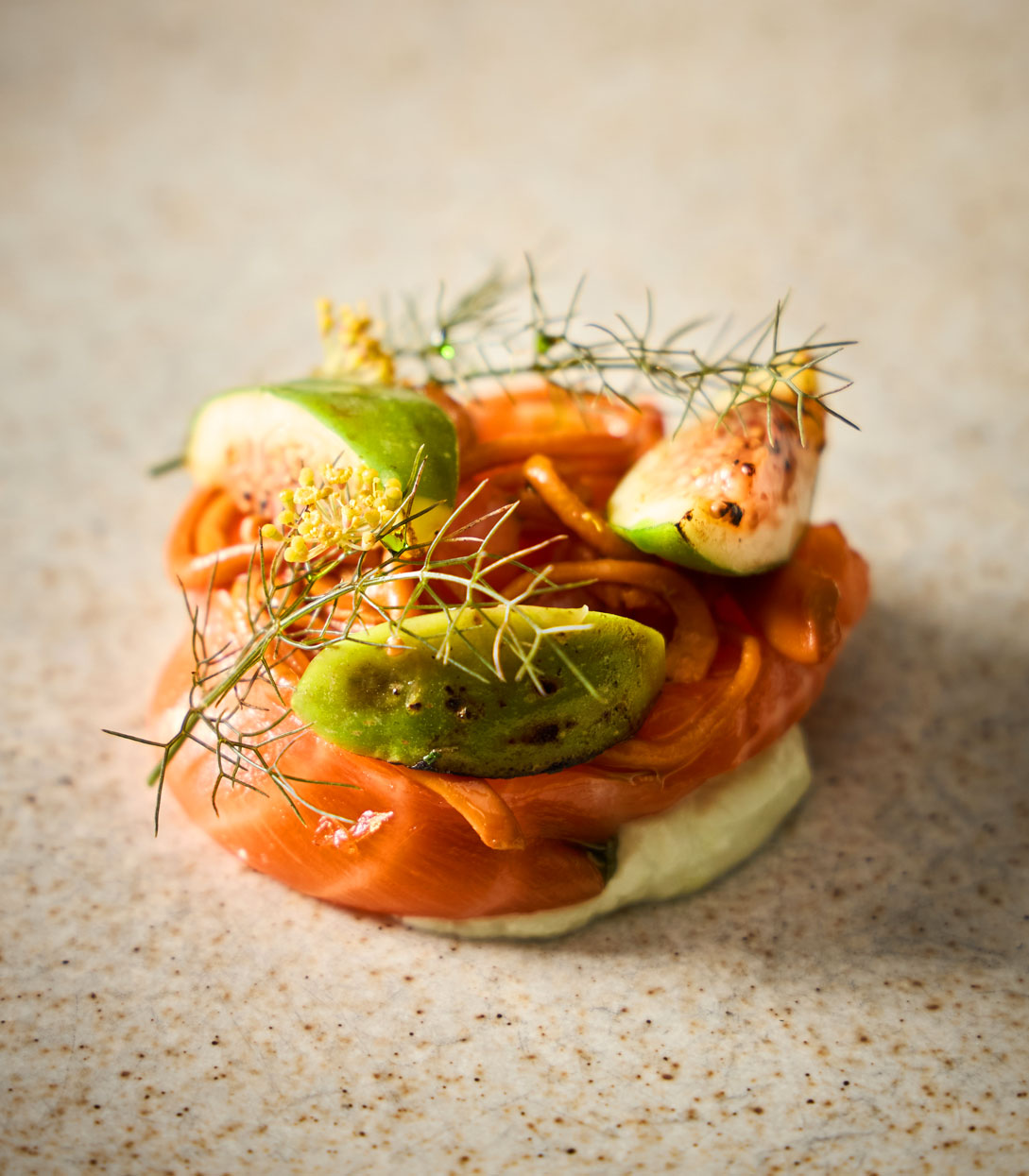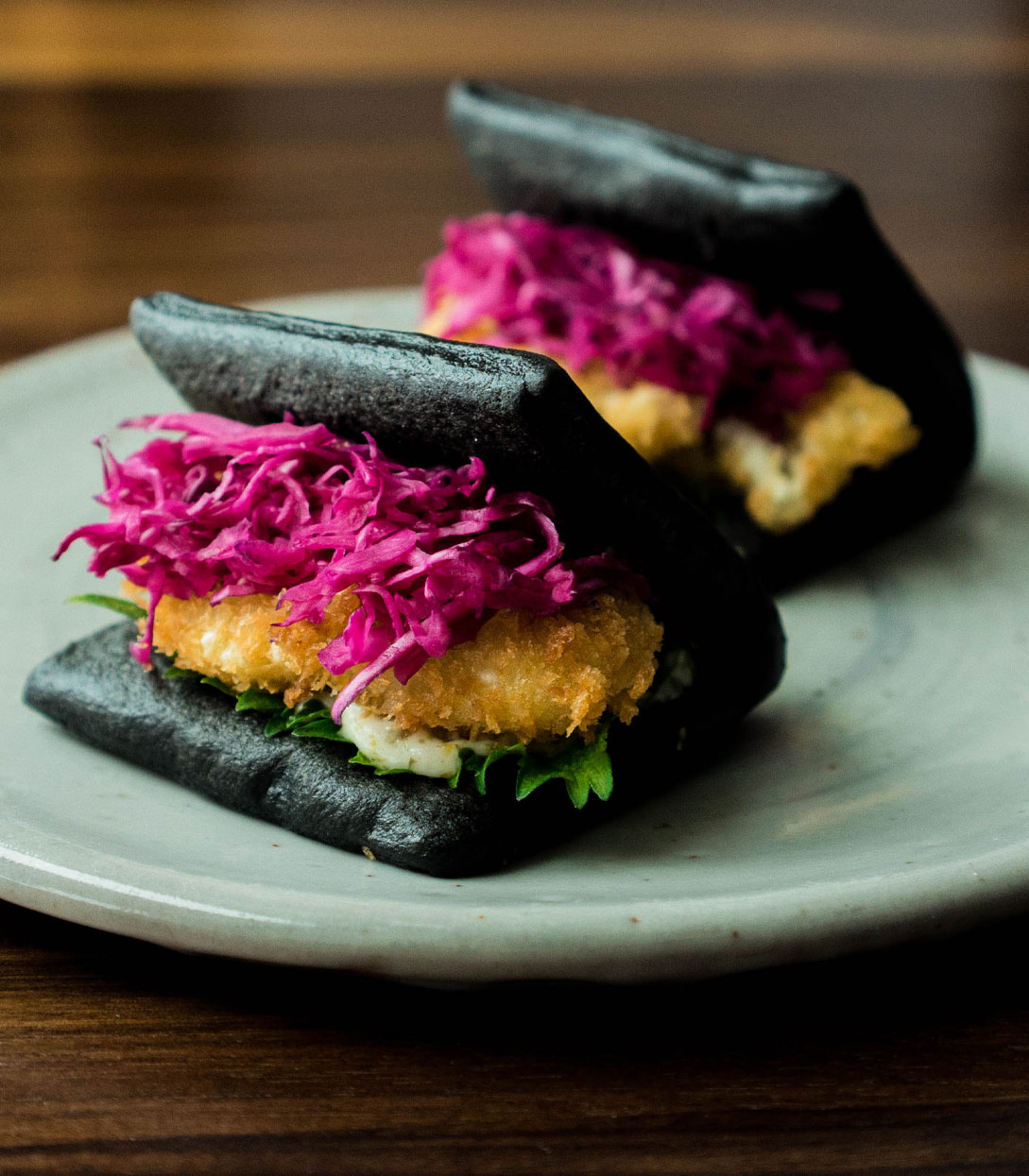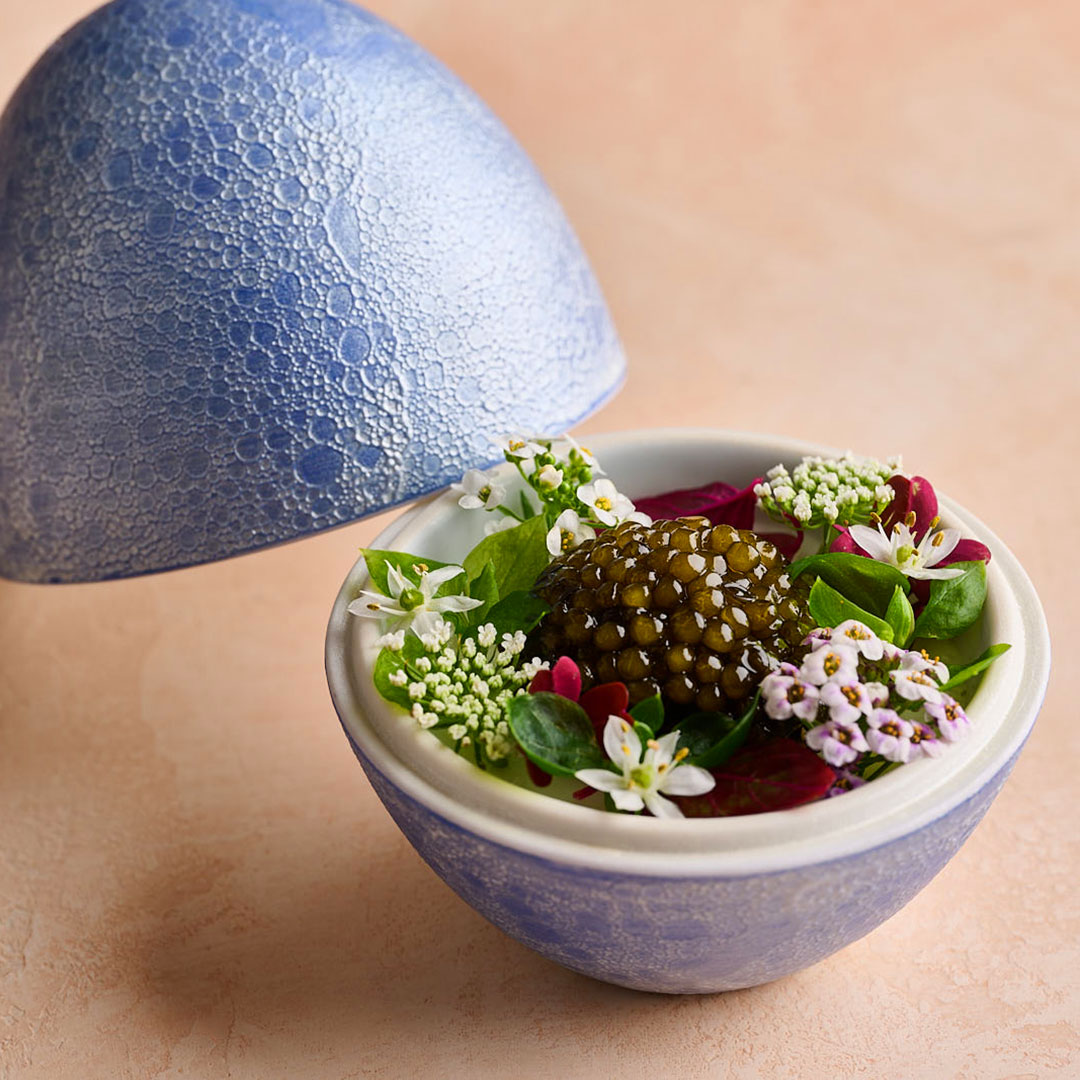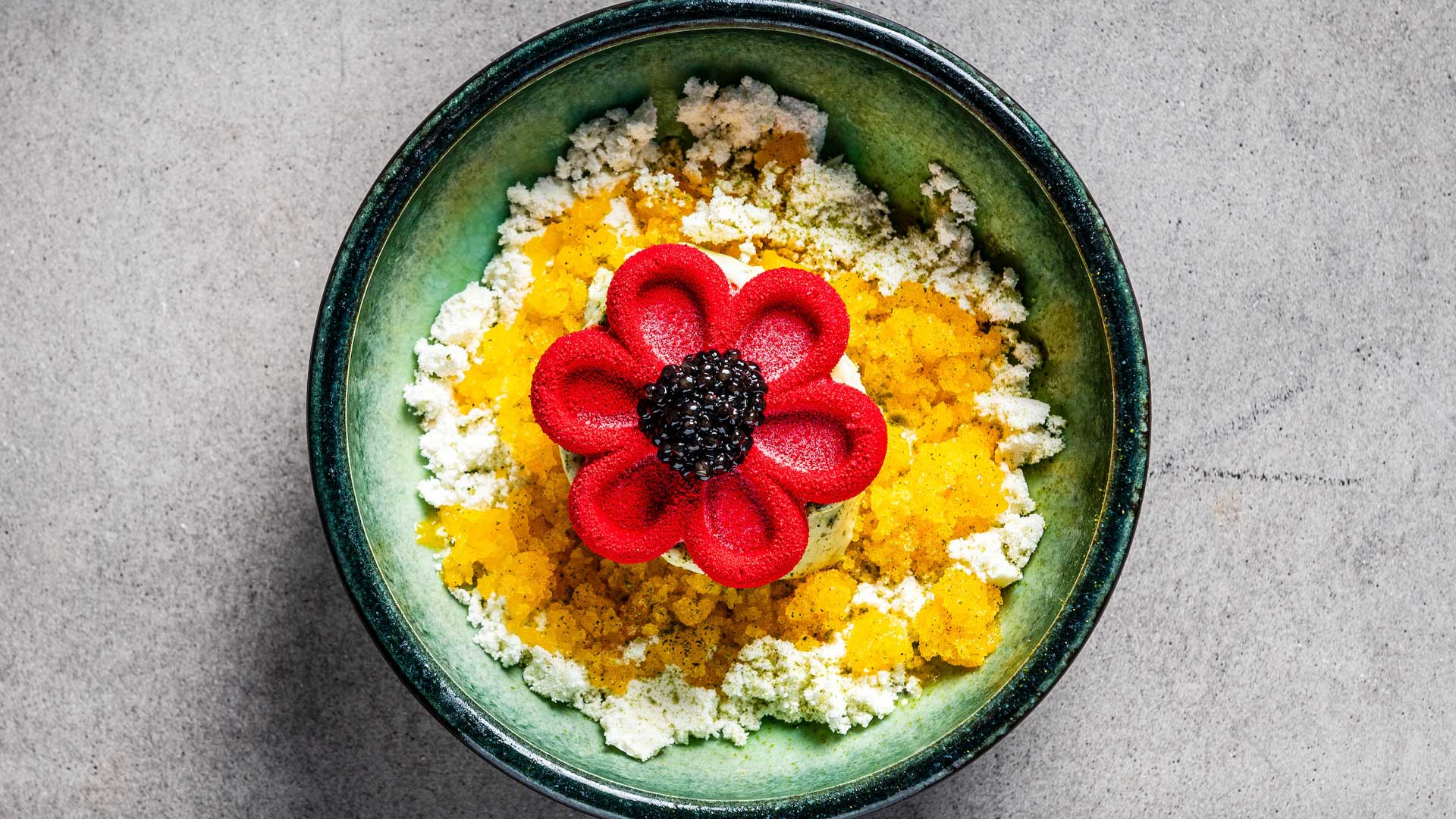Chef Brian Kim has long been associated with excellence in the culinary world, having opened his first restaurant Oiji on the Lower East Side a decade ago upon graduating from the CIA. It was hardly Kim's first foray into the world of fine dining as he cut his chops so to speak at (now closed) Two MICHELIN Starred French boîte Bouley. However, it's his latest ventures, MICHELIN One Star OIJI MI and Bôm, located in the heart of New York's Flatiron district, that are generating buzz. With a passion for creating exceptional dining experiences, Kim's globe-trotting adventures in his youth have exposed him to a vast range of international cuisines, which have fueled his desire to elevate his unique approach to Korean cuisine and modernize the meaning of the prix fixe menu.
In the world of haute cuisine, diners have come to anticipate a certain level of formality and structure with a prix fixe menu. Yet, at Oiji Mi, Chef Kim has shattered these conventions with a daring interpretation of classic Korean fare. Nestled within lavish interiors created by design firm AvroKO (they're responsible for SingleThread and Zou Zou's, amongst others), the restaurant transports guests to the grandeur of the 19th century, when set menus were a pragmatic solution for efficiently serving large parties without breaking the bank. In this way, Oiji Mi not only challenges diners' palates, but also their preconceptions of what fine dining should entail.
But what really sets Oiji Mi apart is the food. “My philosophy is to cook for our guests as if they were our own family and closest friends,” says Kim. His commitment to using only the freshest and highest quality ingredients is evident in every dish. “Before any plate leaves our kitchen, it undergoes a rigorous taste test, ensuring that each dish is nothing short of flawless. This attention to detail is reflected in the hundreds of tasting spoons we use daily,” he says laughing, but his underlying intent is serious.
From the Oiji Bowl, with its depth of contrasting flavors of acidity, spice, crunchy texture combining sea urchin, sweet shrimp, oiji (a traditional Korean salted, pickled cucumber), and seaweed rice, to the slow-cooked wagyu steak and pomme purée that simply melts in your mouth, every dish is a testament to Chef Kim's dedication to his craft. If you're hungry, that's Kim's intent. Each dish is an expression of how Chef Kim takes traditional Korean cuisine and transforms it with his own creative twists. The result is a menu that's both comforting and exciting, featuring dishes that will leave even the most discerning diners wanting more.
Overall, the experience at Oiji Mi was nothing short of exceptional. From the decor to the food, everything about Kim's spot is a testament to the team's dedication to creating a truly luxurious dining experience. Below, we spoke with Kim about some of his favorite dishes on the menu, balancing and honoring Korean culinary traditions while also pushing boundaries, as well as his advice for aspiring chefs.
Can you tell us about the process of creating a prix fixe menu that elevates traditional Korean cuisine?
Our concept is creative contemporary Korean cuisine. Our vision is to offer a new type of Korean cuisine that stays true to its original roots while incorporating a wide array of various flavors, ingredients, and culinary traditions. I want to preserve the core flavors of authentic Korean cuisine while infusing it with new sensibilities and shaping it with new practices.
When creating a menu, endless imagination and refinement are required. While some dishes may come to fruition quickly, just as envisioned, others may take countless iterations to achieve the perfect balance of flavors, textures, and presentation. We are also committed to always having a clear rationale behind the introduction of new methods, flavors, and ingredients; to uphold the title of creative Korean cuisine, we don’t force new elements just for the sake of novelty, but each dish reflects our dedication to providing a unique dining experience.
How do you balance Korean culinary traditions while also pushing boundaries and experimenting with new flavors and techniques?
Developing the menu, our guiding principle is to invent something creative that’s not only new, but also something you couldn’t taste anywhere else, and one that merges the traditional flavors from Korea, where I’ve spent many chapters of my life, with the accents of international cuisines I’ve encountered during my extensive travels abroad. Rather than simply presenting our own take on more well-known dishes like Korean barbecue, bibimbap, or bulgogi, we aim to create a unique dining experience offered only at Oiji Mi.
Can you tell us a little bit about your culinary background?
I was raised in Seoul, Korea and other cities around the world, before settling in New York 15 years ago. Traveling in Europe as a teen, I was captivated by restaurants which led me to aspire to open my own restaurant one day. I decided I’d first have to develop an essential understanding of business, so in college I pursued a degree in Business Administration and went on to learn about marketing while working at a global corporation. As an overseas marketing professional, I got to experience a vast range of international cuisines on all my business trips.
In my twenties, I first opened a restaurant with my friends, which did well until the chef left, leaving it to crumble. That was when I decided I should learn to cook myself, so I began my journey. Most of my training was in Korea from family-owned restaurants and several authentic Korean restaurants there, then 15 years ago I came to New York to attend culinary school.
Oiji Mi is known for its unique and elevated Korean fine dining experience. Can you walk us through the inspiration behind the restaurant's concept and menu?
During the development of Oiji Mi, we dedicated extensive time to conceptualizing every aspect of the dining experience, ensuring that the food, interior design, facilities, and service complemented each other seamlessly. Our ultimate goal was to create a restaurant that not only served the most delicious food but also featured the most beautiful design in New York. We wanted Oiji Mi to offer a unique experience that was authentically ours.
In both the menu and design, we aimed to maintain the distinctive taste and beauty of Korean tradition while also providing a sense of familiarity to our guests. Achieving a harmonious balance between Eastern and Western influences, tradition and modernity, requires tremendous creativity. We also place great emphasis on aligning the food and design philosophies. Just as we strive to retain authentic Korean flavors while creatively interpreting them, we wanted the design to reflect a unique personality and sense of harmony between Korean and modern Western influences. Every detail was carefully considered, resulting in a space that feels natural and "makes sense" as a whole. We even collaborated with Korean artists and ceramists to customize our tableware and silverware, ensuring that each piece was uniquely ours.
To me, a great restaurant is the perfect combination of food and experience. Some diners may value the taste of the dishes over everything else, while others may prioritize the atmosphere and service. I believe that the food, flavors, ambiance, and service all hold equal importance, and we worked tirelessly to ensure that Oiji Mi satisfied all aspects. We aimed to provide a space that was elegant and luxurious while still comfortable and inviting, offering the highest level of design possible.
The Korean word "Mi" holds two meanings—"taste" or "flavor" and "beauty." This perfectly encompasses the two elements we hope to showcase through the food, interior design, and overall experience.
Prix fixe menus are often associated with European fine dining. What was your thought process behind incorporating this format into Oiji Mi's Korean cuisine?
Our approach to dining at our restaurant is rooted in the traditional European fine dining format, but with a focus on incorporating authentic Korean flavors; our menu is curated to provide a progression of courses crafted to optimize the flavors and textures of each dish. To begin, we offer a selection of lighter and more acidic courses to awaken and stimulate the palate. Moving towards the middle of the meal, we introduce rice and noodle courses that provide a satisfying blend of carbohydrates and protein. Finally, our entrees are centered around high-quality proteins complemented with seasonal vegetables.
Can you offer any advice for aspiring chefs looking to make their mark in the culinary industry?
Widen your horizons. While having excellent culinary skills is undoubtedly essential and not just an “added plus,” it is merely the foundation for becoming a great chef. You'll also require a range of abilities, including leadership, management, creativity, crisis management, and communication. Particularly if your goal is to be an "Owner / Chef," business and management skills are critical. Without the necessary finances, it's difficult to showcase your creativity and culinary skills, and so it's vital to have multifaceted expertise in areas such as marketing, management, accounting, and more. Additionally, I encourage young chefs to explore the worlds of art, interior design, fashion, and culture to broaden perspectives as well.
The presentation of the dishes at Oiji Mi is just as impressive as their taste. Can you walk us through your approach to plating and presentation?
We believe that presentation is just as important as taste, and therefore strive to create a menu that is not only delicious, but visually appealing and engaging. To do this, we carefully consider the aesthetics of each dish and how they interact with one another, selecting plateware that complements and highlights the various components. To ensure that every detail is just right, we work closely with talented Korean artists and ceramists, customizing each piece of tableware and silverware to perfectly complement our menu.
However, we also recognize the importance of smooth, efficient service and the challenges that come with food preparation. Balancing the need for beautiful plating with the need for timely service can be a difficult task for any chef. Temperature is also a constant concern, with hot dishes needing to stay hot and cold dishes needing to stay cold. Despite these challenges, we remain committed to providing our customers with a dining experience that is both visually stunning and delicious.
As a chef, how do you continue to challenge yourself and stay inspired in your cooking?
As chefs, I believe there are three levels of mastery: laborer, technical worker, and artist. At the outset of a career, one learns through a great deal of hard work and toil. With enough learning and practice, technical skills are acquired. But to truly achieve artistry, much more is required. It is my belief that creativity and artistic skills can only be honed through years and years of experience in the field. In a city like New York, home to some of the most aesthetically and artistically-inclined individuals in the world, one must possess a discerning eye to make it. To cultivate this ability, I constantly immerse myself in new cultural and artistic environments. For example, when I travel, I make a point of staying at a different hotel each night to sample a range of services, foods, and designs. I also enjoy attending interior fairs, museums, and galleries to draw inspiration.
Korean cuisine has been gaining more recognition and appreciation globally. What do you hope to see for the future of Korean food and its representation in the culinary world?
Despite this growth in popularity, I believe Korean cuisine is still not as widely admired as other Western or Asian cuisines, perhaps due to lack of exposure. In my opinion, anyone who experiences an authentic Korean dining experience would undoubtedly fall in love with it, just as I have. I have great appreciation for Korean cuisine and hope that New Yorkers will have more opportunities to experience it through the openings of more great restaurants. I myself hope to contribute to the spreading of awareness and offering memorable experiences of Korean cuisine.
What advice would you give to someone who is new to Korean cuisine and wants to explore it more deeply?
One of the best ways to truly immerse yourself in Korean cuisine and experience its many flavors and textures is by visiting Korea and dining across the country. However, if that's not feasible, you can still savor the delights of Korean cuisine by visiting one of the many authentic Korean restaurants established by Korean-American immigrants across major cities in the US.
Finally, what do you hope guests take away from their dining experience at Oiji Mi?
At Oiji Mi, we strive to provide guests with an experience of unique, inventive, and delicious cuisine, all in the midst of an exquisitely designed, aesthetically pleasing space. Our goal is to offer a holistic dining experience that encompasses the flavors on the plate, the ambiance, décor, and service. Our hope is that each guest departs with a sense of satisfaction and contentment, having been fully immersed in a memorable and delightful culinary journey.
Hero: Christian Harder/Oiji Mi






